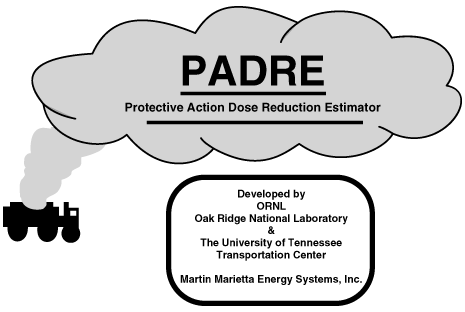


PADRE simulation model logo.

How can accurate predictions of exposure to accidental releases of chemicals be made in view of alternative protective action guides, emergency technologies, and human behavior?

PADRE, or the Protective Action Dose Reduction Estimator, has been developed at Oak Ridge National Laboratory by integrating physical, health, and social science knowledge related to dose estimation.
The model is designed to iteratively present the user with dialog screens to set accident parameters, to specify the emergency response, and designate the protective actions employed. The results are portrayed as the accumulation of the outside exposure to a chemical agent over time for someone taking no protective action and for the accumulated exposure given the chosen emergency system and protective action.
Planners can see when the plume arrives, when it departs, the expected dose reduction from the protective action scenario, and how much more dose savings can be achieved by reducing response time. PADRE allows the user to change scenarios and analyze the change in exposure to chemical agents.
The interface allows the user to quickly change the accident scenario and meteorological conditions, and it specifies an air exchange rate for a structure and evaluation time. In addition, PADRE takes into account how long officials take to issue a warning; the type of warning system in place to alert the public, including sirens, tone alert radios and others; and the speed of public response. PADRE simulates the effectiveness of respiratory protection. This simulation is useful for situations in which occupational safety or worker protection is of interest. The model is being developed with support from the Federal Emergency Management Agency as part of the Chemical Stockpile Emergency Preparedness Program.

Sorensen, J., G. Rogers, and M. Meador. 1992. Modelling protective action decisions for chemical weapons accidents. pp. 30-34. In J. Sullivan and B. Clymer (eds.), Managing Risk with Computer Simulation. Society for Computer Simulation, San Diego.
Rogers, G., A. Watson, J. Sorensen, R. Sharp, and S. Carnes. 1990. Evaluating protection actions for chemical agent emergencies. ORNL-6615. Oak Ridge National Laboratory, Oak Ridge, Tenn.
Integrated Assessment Briefs. 1995. ORNL/M-4227. Oak Ridge National Laboratory, Oak Ridge, TN.